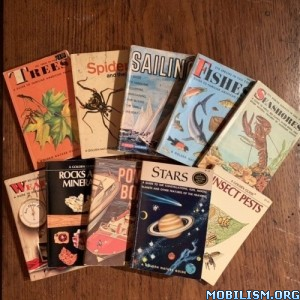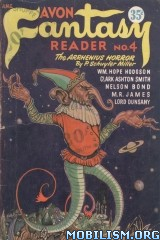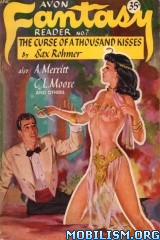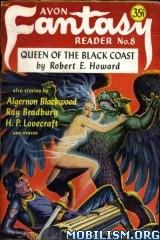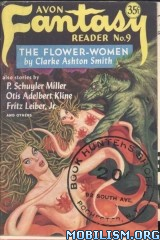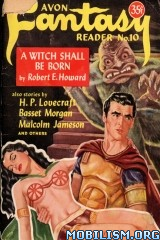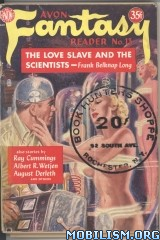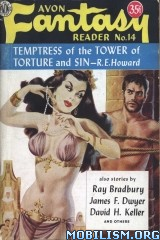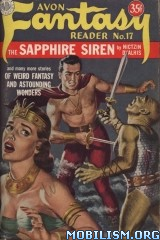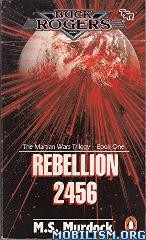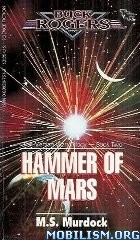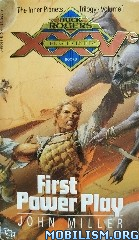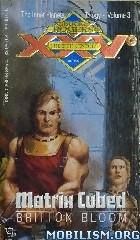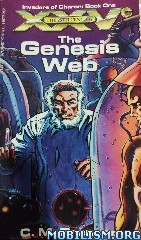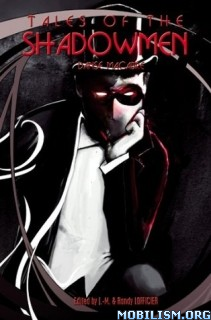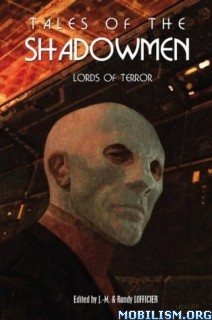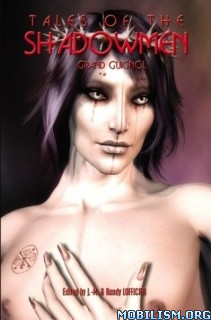18 books by Paul Feval
Requirements: .ePUB reader, 9.36 MB
Overview: Paul Henri Corentin Féval, père, (1816-1887) was the author of popular swashbucklers, such as Le Loup Blanc (1843) and the perennial best seller Le Bossu (1857). He also penned the seminal Knightshade, The Vampire Countess and Vampire City. His greatest claim to fame was as one of the fathers of the modern crime thriller. Because of its themes and characters, his novel Jean Diable (1862) can claim to be the world’s first modern detective novel. His masterpiece was Les Habits Noirs (1863-75), a criminal saga written over a twelve year period comprised of seven novels. After losing his fortune in a financial scandal, Féval became a born again Christian, stopped writing crime thrillers, and began to write religious novels, sadly leaving the tale of the Black Coats uncompleted.
Genre: Collections


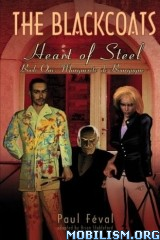
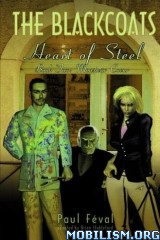
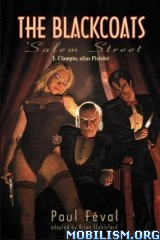
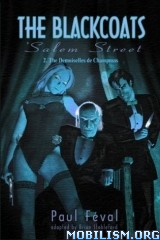
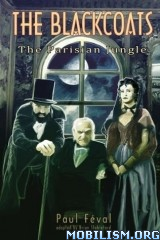
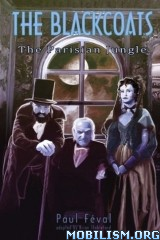

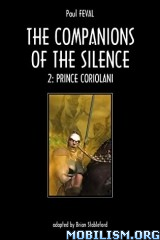
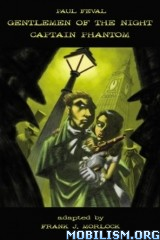


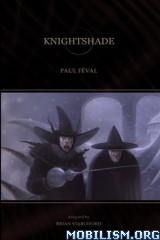
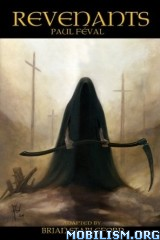

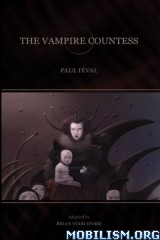

Anne of the Isles and Other Legends of Brittany adapted by Brian Stableford
Everyone trembled at the mere mention of the name of Anne of the Isles. The blood of Joël Braz the warlock ran in her veins. She was a priestess and a sorceress. Woe betide any man whose path crossed hers!
When Bretons tell stories, their tales have the Devil and Death for their main characters and graveyards and wind-swept, demon-haunted hills for their settings. The whistling of the tempest and the distant chimes of a tolling bell is always audible within them.The White Lady of the Marshes had avenged herself cruelly against the incredulous, they were well-advised never to entrust their boats to the current of the Oust once the north star had risen over the black trees of the Forêt-Neuve…
Two men dressed in long shrouds, as white as snow, were following the dog. When they passed in front of the Steward of Plougaz, the Moon lit their pale faces, their hollow cheeks and the orbits where there were no eyes…
Thank you, Belles-de-Nuit, gentle spirits that the mercy of God allows to wander in the poor by-ways of Brittany!
Anne of the Isles, last priestess of the Celtic Gods… The vengeful White Lady of the Marshes… The last fairies of mythical Lyonesse… Only Paul Féval, the author of Vampire City and Revenants could paint the epic Gothic fantasies of mist-shrouded, storm-beaten Ancient Brittany with so much color and flamboyance.
Contents:
– Anne des Iles (Anne of the Isles, 1842)
– La Femme Blanche des Marais (The White Lady of the Marshes, 1842)
– Le Joli Château (The Lovely Chateau, 1844)
– Les Belles-de-Nuit (1862)
by Paul Féval;
Introduction, Afterword and Notes by Brian Stableford.
Bel Demonio adapted by John Stebbing & Randy Lofficier
“Bel Demonio was a fantastic hero of the mountain legends. According to all accounts, it was a being that was bold, cruel, and powerful; but while some declared that the creature was fair and beautiful as a girl, others were equally certain that he dark as Satan."
Bel Demonio takes place in the Spoleto region of Italy between 1625 and 1655. Ercole Vitelli murders his cousin, Francis Vitelli, who is the legitimate heir of the wealthy Monteleone family, under the eyes of Francis’ son, Andrea. Fifteen years later, Andrea returns seeking revenge, posing as “Demonio,” the leader of a ring of bandits.
Bel Demonio (1850) and The Companions of the Silence (1857), were retroactively linked by Paul Féval to his saga of the Black Coats, functioning as the backstory of that vast criminal conspiracy. Andrea Vitelli is cast in the same mold as Monte-Cristo. At the heart of the plot is revenge for a crime committed with impunity. But if the revenge plot is the engine that keeps the action going, Féval can’t hide his fascination for the character of the criminal mastermind at the center of it all, even if at heart he is secretly a hero.
Bel Demonio is an important stepping-stone in the development of modern popular fiction.
The Black Coats: Heart of Steel 1: Marguerite de Bourgogne adapted by Brian Stableford
Léon saw before him, in the frame of those dark tresses, the head of a young woman with delicate and almost child-like features. For him, the illusion attained the supernatural-and it required the subtle gaze that filtered momentarily between Marguerite’s long lashes to recall him to a sense of reality. "You’ve grown younger," he said, "while we’ve grown old."
At last, we learn the history of Marguerite Sadoulas, once an obscure young actress who, through her stunning beauty and Machiavellian intelligence, overcame all obstacles and reached the pinnacle of Parisian high society, becoming the much-envied Countess de Clare, while, at the same time, rising in the criminal hierarchy of the Black Coats, to eventually be admitted into the much-feared High Council of that all-powerful, evil society.
Written in 1865, Heart of Steel is the first chapter chronicling the Black Coats’ attempts at stealing the fabulous fortune of the de Clare family. Paul Féval, the father of the modern detective novel, continues the dark chronicles that gave its lettres de noblesse to criminal literature by introducing the first, great female villain in the history of crime fiction.
The Black Coats: Heart of Steel 2: Monsieur Coeur adapted by Brian Stableford
Léon saw before him, in the frame of those dark tresses, the head of a young woman with delicate and almost child-like features. For him, the illusion attained the supernatural-and it required the subtle gaze that filtered momentarily between Marguerite’s long lashes to recall him to a sense of reality. "You’ve grown younger," he said, "while we’ve grown old."
At last, we learn the history of Marguerite Sadoulas, once an obscure young actress who, through her stunning beauty and Machiavellian intelligence, overcame all obstacles and reached the pinnacle of Parisian high society, becoming the much-envied Countess de Clare, while, at the same time, rising in the criminal hierarchy of the Black Coats, to eventually be admitted into the much-feared High Council of that all-powerful, evil society.
Written in 1865, Heart of Steel is the first chapter chronicling the Black Coats’ attempts at stealing the fabulous fortune of the de Clare family. Paul Féval, the father of the modern detective novel, continues the dark chronicles that gave its lettres de noblesse to criminal literature by introducing the first, great female villain in the history of crime fiction.
The Black Coats: Salem Street 1: Clampin, alias Pistolet adapted by Brian Stableford
1834. Using a Pretender to the Throne of France, the powerful crime cartel known as the Black Coats plan to steal one of the largest fortunes of Europe. But from Jerusalem Street in Paris, the headquarters of the Sûreté, to the Castles of Normandy, their schemes are foiled by a new nemesis: a young street urchin nicknamed Pistolet, worthy precursor of Rouletabille and Archie Goodwin. The dreaded cabal is not so easily thwarted… In this book, for the first time, Paul Féval, the father of the modern detective novel, reveals the origins of the Black Coats and of their mysterious, seemingly eternal master, Colonel Bozzo. Long before the Corleones, Blofeld, Fu-Manchu and Moriarty, the historical saga of the Black Coats, spanning seven volumes, of which this is the first to be translated, gave its lettres de noblesse to criminal literature. "The Black Coats remain unique. They remain unchallenged as invincible architects of fiendish plots, for whom monetary gain is merely a way of keeping score, while their true purpose is to do evil for evil’s sake, even–and perhaps especially–to one another.
The Black Coats: Salem Street 2: The Demoiselles de Champmas adapted by Brian Stableford
"A moment, my lambs!" said the larger of the two men, whose face was hidden by the rim of his felt hat. "IT’S GETTING LIGHT!" It was as if a thunderbolt had fallen into the midst of the assassins. "Lecoq!" they said in a tone of inexpressible terror."Good evening, children," the shorter of the two new arrivals said. "Godfather!" murmured the trembling bandits."
The first volume in Paul Féval’s 1860s multi-layered, seminal crima saga, which also include John Devil and Gentlemen of the Night.
1834. Using a Pretender to the Throne of France, the powerful crime cartel known as the Black Coats plan to steal one of the largest fortunes of Europe. But from Jerusalem Street in Paris, the headquarters of the Sûreté, to the Castles of Normandy, their schemes are foiled by a new nemesis: a young street urchin nicknamed Pistolet, worthy precursor of Rouletabille and Archie Goodwin. The dreaded cabal is not so easily thwarted…
In this book, for the first time, Paul Féval, the father of the modern detective novel, reveals the origins of the Black Coats and of their mysterious, seemingly eternal master, Colonel Bozzo. Long before the Corleones, Blofeld, Fu-Manchu and Moriarty, the historical saga of the Black Coats, spanning seven volumes, of which this is the first to be translated, gave its lettres de noblesse to criminal literature.
"The Black Coats remain unique. They remain unchallenged as invincible architects of fiendish plots, for whom monetary gain is merely a way of keeping score, while their true purpose is to do evil for evil’s sake, even–and perhaps especially–to one another." Brian Stableford.
The Black Coats: The Parisian Jungle 1: The Engraved Armband adapted by Brian Stableford
"There are some strange animals in the Parisian jungle. I know everyone there, hunters and prey alike-a strange undergrowth, where it’s the hare that follows the track of the hounds…"
Lecoq.
"Will it be light tomorrow? Will there be blood and gold? Shall we hear the concert of gunfire? Shall we look down from our saddles upon our white-faced captives? Yes, it will be light tomorrow! The somber horsemen will ride along the mountain paths and the bold lords of the Black Coats will display the velvet of their cloaks, and everywhere there will be a name: mine, resounding like thunder…" The Colonel.
Paul Féval, the father of the modern detective novel, turns Paris — the beating heart of civilization — into a dangerous jungle whose undergrowth shelters all manner of predators.
Written in 1863, The Parisian Jungle is the first in a series of crime novels depicting the exploits of the world’s foremost international criminal organization, anticipating modern-day works such as The Godfather and The Sopranos.
"The notion that crime fiction could be, and was destined to be, a full-blown literary genre emerges from The Black Coats." Brian Stableford.
The Black Coats: The Parisian Jungle 2: Trois-Pattes adapted by Brian Stableford
"There are some strange animals in the Parisian jungle. I know everyone there, hunters and prey alike-a strange undergrowth, where it’s the hare that follows the track of the hounds…"
Lecoq.
"Will it be light tomorrow? Will there be blood and gold? Shall we hear the concert of gunfire? Shall we look down from our saddles upon our white-faced captives? Yes, it will be light tomorrow! The somber horsemen will ride along the mountain paths and the bold lords of the Black Coats will display the velvet of their cloaks, and everywhere there will be a name: mine, resounding like thunder…" The Colonel.
Paul Féval, the father of the modern detective novel, turns Paris — the beating heart of civilization — into a dangerous jungle whose undergrowth shelters all manner of predators.
Written in 1863, The Parisian Jungle is the first in a series of crime novels depicting the exploits of the world’s foremost international criminal organization, anticipating modern-day works such as The Godfather and The Sopranos.
The Companions of the Silence 1: The Seven Iron Rings adapted by Brian Stableford
Trentacapelli was found on the Cosenza road, with his face in a puddle and the blade of a Calabrian knife sticking out of his back.”
“It was the knife of a companion?”
“It was the knife of the Silence.”
In 1808, the three children of Mario Monteleone, grandmaster of the Iron Knights, a secret society in Southern Italy, are kidnapped by a mysterious enemy. In 1815, Mario himself is arrested and executed. The Iron Knights then morph into the Companions of the Silence, which have sworn to avenge Mario, but eventually turn to crime. In 1823, a mysterious stranger walks into their midst, claiming to be the notorious bandit Bel Demonio, but in fact, he is Mario’s eldest son, Fulvio. He then takes over the Companions and embarks on a mission of vengeance, while defying the traps laid for him by the diabolical Chief of Police, Johann Spurzheim.
Bel Demonio (1850) and The Companions of the Silence (1857), were retroactively linked by Paul Féval to his saga of the Black Coats, functioning as the backstory of that vast criminal conspiracy. The peak of development that he attained in The Companions of the Silence was so splendidly theatrical, that future exercises in a similar vein had no option but to take a step back and find new directions of development.
The Companions of the Silence forms an important bridge between the author’s earlier tales of heroic banditry and the pioneering exercises in crime fiction that began with John Devil (1862) and continued with the The Black Coats (1863-75).
The Companions of the Silence 2: Prince Coriolani adapted by Brian Stableford
In 1823, a mysterious stranger walks into the midst of the Companions of the Silence, claiming to be the notorious bandit Bel Demonio, but in fact, he is Mario Monteleone’s eldest son, Fulvio, Prince Coriolani. He then takes over the Companions and embarks on a mission of vengeance, while defying the traps laid for him by the diabolical Chief of Police, Johann Spurzheim.
The Companions of the Silence, translated here for the first time, was retroactively linked by Paul Féval to his saga of the Black Coats, functioning as the backstory of that vast criminal conspiracy. The peak of development that he attained in The Companions of the Silence was so splendidly theatrical, that future exercises in a similar vein had no option but to take a step back and find new directions of development.
The Companions of the Silence forms an important bridge between the author’s earlier tales of heroic banditry and the pioneering exercises in crime fiction that began with John Devil and continued with the The Black Coats.
Gentlemen of the Night / Captain Phantom (French Mystery) adapted by Frank J. Morlock
"They’re everywhere. Their name is like a talisman that opens all doors and bends all wills. The man who can pronounce that name is master everywhere — Gentlemen of the night!"
In 1830 London, the Marquis de Rio Santo, leader of the criminal empire known as the Gentlemen of the Night, schemes to free Ireland by plunging England into chaos.
Our soldiers believe in the existence of a supernatural being, a fantastic cavalier, dressed in the uniform of a French dragoon, who hides his face behind a black mask — Captain Phantom!
In Spain during the Peninsular War of 1808, Don Cesar de Cabanil becomes the mysterious Captain Phantom to fight for justice and protect the innocents in his war-torn country.
Paul Féval’s greatest claim to fame is, undoubtedly, having been one of the founding fathers of modern heroic fiction. He developed the concepts of criminal masterminds in The Black Coats and its predecessor, Gentlemen of the Night (1843) and anticipated masked swashbucklers like Zorro with The White Wolf and Captain Phantom (1862). Both plays are translated by playwright Frank J. Morlock.
John Devil 1: The Chateau de Belcamp (French Mystery) adapted by Brian Stableford, Frontispiece by Sylvain Despretz
"JOHN DEVIL! That name pursues me. Someone is beneath that mask and behind that lie! Will I die mad before strangling my executioner?"
In 1862, Paul Féval founded the magazine Jean Diable. Emile Gaboriau, creator of Monsieur Lecoq, was one of its editors. Lecoq later influenced the creation of Sherlock Holmes.
1817, England. Chief Superintendent Gregory Temple of Scotland Yard is mystified by the actions of a faceless crime leader who calls himself "John Devil" and is also known on the continent as Jean Diable and Hans Teufel…
Can the world’s first scientific detective use his prodigious abilities to discover the secret identity of the elusive John Devil and capture him before the madman rescues Napoleon from Saint-Helens?
Written in 1861, John Devil will be of special interest to fans of detective stories, crime thrillers, classic mysteries, pulp literature and proto science-fiction.
Paul Féval pioneered the modern crime thriller, creating here both the first police detective (Gregory Temple is the first Scotland Yard Detective in fiction) and the first arch-criminal (John Devil is a proto-Fantômas) in popular fiction.
The villain’s plot to use armored warships to free Napoleon and conquer India also makes it the first techno-thriller in popular literature. The book includes an authoritative introduction and historical notes by Brian Stableford.
John Devil Part Two: The Trial of John Devil (French Mystery) adapted by Brian Stableford
"JOHN DEVIL! That name pursues me. Someone is beneath that mask and behind that lie! Will I die mad before strangling my executioner?"
In 1862, Paul Féval founded the magazine Jean Diable. Emile Gaboriau, creator of Monsieur Lecoq, was one of its editors. Lecoq later influenced the creation of Sherlock Holmes.
1817, England. Chief Superintendent Gregory Temple of Scotland Yard is mystified by the actions of a faceless crime leader who calls himself "John Devil" and is also known on the continent as Jean Diable and Hans Teufel…
Can the world’s first scientific detective use his prodigious abilities to discover the secret identity of the elusive John Devil and capture him before the madman rescues Napoleon from Saint-Helens?
Written in 1861, John Devil will be of special interest to fans of detective stories, crime thrillers, classic mysteries, pulp literature and proto science-fiction.
Paul Féval pioneered the modern crime thriller, creating here both the first police detective (Gregory Temple is the first Scotland Yard Detective in fiction) and the first arch-criminal (John Devil is a proto-Fantômas) in popular fiction.
The villain’s plot to use armored warships to free Napoleon and conquer India also makes it the first techno-thriller in popular literature. The book includes an authoritative introduction and historical notes by Brian Stableford.
Knightshade – The Vampire Brothers (French Horror Book 7) adapted by Brian M. Stableford
In the middle of the Great Hungarian Plain there are two graves, each covered by a black stone, both of which carry inscriptions. On the larger one. Jean Ténèbre, Chevalier; on the smaller, Ange Ténèbre, Priest. They are the Ténèbre brothers…
Written in 1860 – almost 40 years before Bram Stoker’s Dracula – Knightshade is one of three classic vampire stories (also available from Black Coat Press) penned by Paul Féval, along with Vampire City and The Vampire Countess.
Educated men say that they are the tombs of two French noblemen who came with many others to help the voivode John Hunyadi defend Christendom against the Turks four hundred years ago. Men who are not educated affirm that for four centuries there has lain beneath these marble slabs an oupire and a vampire: one an eater of human flesh, the other a drinker of human blood.
On many occasions, during the four hundred years, those graves have opened, to the terror and the horror of the surrounding country. Sometimes, two corpses were found beneath the stones, one tall and one short, which gave every indication of recent death: eyes open and shining, blood liquid in the veins, tongues moist and lips red. At other times, the open graves displayed nothing but their emptiness: two black cavities from which the odour of death emerged. It is certain, moreover, that many attempts have been made to destroy these graves: the marble slabs have been broken, the rubble dispersed, the ground levelled-and invariably, when some time has passed, the two black stones resurface beneath the grass or the corn, intact once again, bearing the same funerary inscriptions.
It is certain-as the registers of the courts testify-that within the last twenty years alone, the brothers Ténèbre have been hanged in a dozen different places in Hungary, and seven times impaled in Turkish territory…
"The brothers Ténèbre are the Eternal Adversaries against which Eternal Champions and Thousand-Faced Heroes are pitched," writes Brian Stableford.
Revenants (French Horror Book 8 ) adapted by Brian Stableford
"When the damned calls out to the avenger;
When the Stone missing from the Tomb of Tanneguy is found again,
Treguern, three times dead, will be resurrected."
The Prophecy of Treguern.
1800. On the windswept moors of Brittany, renegade priest Gabriel Le Brec and Count Filhol de Treguern embark on a scheme to defraud an insurance company by faking the death of the latter. This sets in motion a danse macabre of murders, betrayals, people who change their names, lost birth certificates, false testimonies, an Ann Radcliffe romance, a Miltonian struggle between Good and Evil and an impossible phantasmagoria of living men who pretend to be dead and dead men who return to claim vengeance.
"The whole plot is a duel between two insanely obsessive sorcerers, Commander Malo Treguern and Dowager Françoise Le Brec. Were it not for Féval’s repeated assurances that Malo has Destiny and God on his side, while the Dowager is the Devil’s pawn, the reader would surely be at a loss to know which of the two to support." Brian Stableford.
Vampire City (French Horror Book 5) adapted by Brian M. Stableford
Some tell of a great city of black jasper which has streets and buildings like any other city but is eternally in mourning. Some call it Selene, sometimes Vampire City, but the vampires refer to it among themselves by the names of the Sepulchre.
Written in 1867 – 30 years before Bram Stoker’s Dracula – Vampire City is one of three classic vampire stories penned by Paul Féval, along with Knightshade and The Vampire Countess.
There is a little-known place which is undoubtedly the strangest in the world. The people who inhabit the barbarous lands around Belgrade sometimes call it Selene, sometimes Vampire City, but the vampires refer to it among themselves by the names of the Sepulchre and the College.
It is normally invisible to mortal eyes-and to the eyes of each of those who contrive to catch a glimpse of it, it presents a different image. Some tell of a great city of black jasper which has streets and buildings like any other city but is eternally in mourning, enveloped by perpetual gloom. Others have caught sight of immense amphitheatres capped with domes like mosques, and minarets reaching for the sky more numerous than the pines in the forest of Dinawar. Yet others have found a single circus of colossal proportions, surrounded by a triple rank of white marble cloisters lit by a lunar twilight that never gives way to day or night.
Arranged there, in mysterious order, are the sepulchral dwellings of that prodigious people which the wrath of God has placed in the margins of our world. The sons of that people, half demon and half phantom, are living and dead at the same time, incapable of reproducing themselves but also deprived of the blessing of death. Their womenfolk are ghouls, also known as oupires. Some, it is said, have sat on thrones and terrified history. Following the example of those men of iron who were oppressors of the country in the Middle Ages-and who, when beaten back, retreated to their impregnable fortresses-they maintain this sinister and splendid shelter: a citadel and place of refuge, as inviolable as the tomb…
To save her friends from the dreaded vampire lord Otto Goetzi, gothic author Ann Radcliffe and her fearless vampire hunting companions, Merry Bones the Irishman, Grey Jack the faithful old servant, the revenge-driven Doctor Magnus Szegeli, and Polly Bird, one of the vampire’s earlier victims, launch an all-out attack on Selene…
"With the aid of hindsight," writes Stableford, "we can easily see in Vampire City the ultimate literary ancestor of Buffy the Vampire-Slayer. Although Radcliffe is not permitted by her gentlemanly author actually to slay any vampires with her own hand she is nevertheless the prime mover of the expedition to Selene; she watches with a distinctly proto-feminist fascination as the Irish hero carefully excises the heart from the breast of Goetzi…"
Winner of the Dracula Society’s "Children of the Night" award for best novel of 1999!
The Vampire Countess (French Horror Book 6) adapted by Brian M. Stableford
In vita mors, in morte vita! An appropriate motto for a vampire! In life, death; in death, life!
Written in 1856 – over 40 years before Bram Stoker’s Dracula – The Vampire Countess is one of three classic vampire stories penned by Paul Féval, along with Knightshade and Vampire City.
"I read the most astonishing of all books last night… The Legend of the Ghoul Addhema and the Vampire of Szandor, printed in Baden in 1736, by Professor Hans Spurzheim, doctor of the university of Pressburg. The vampire Addhema took the life of her victims at a discount, so to speak, living one hour for each of their years, while ceaselessly roaming the world collecting treasures for the king of the living dead, Count Szandor. She loved him adoringly, under a curse, and he sold her his kisses for the price of a gold piece each.
"The particular gift of Addhema was to be reborn as beautiful and young as love itself every time she could apply to the hideous bareness of her skull a living head of hair. I mean a scalp, torn from the head of a living victim. This was why her tomb was full of the skulls of young women and adolescent girls. In much the same fashion as the savages of North America who strip the flesh from the heads of their vanquished enemies and carry their scalps away as trophies, Addhema selected and carried off to her sepulchre the most beautiful and happiest faces she could find, so that she might tear from their heads the prey that would secure a few days of youth-for the spell only lasted a few days: as many days as the years of life that remained to the victim. At the end of this period a new forfeit was necessary, and a new victim.
"Addhema could not surrender herself to a lover before having told him her own history. In the middle of a conversation of love she had to bring up the strange story that I have just told you, speaking of dead girls, of scalps torn away, and relating with exactitude the bizarre conditions of her death in life, her life in death. I employ the past tense, because she once broke the rule governing her hideous resurrections, and that was while she was bearing the blonde hair of our mother. Love made her forget her strange duty. She received the kiss of a young Serb, as beautiful as the day itself, before having sought and found the opportunity to set out her supernatural history. The evil spirit withdrew at the very moment when she stammered words of tenderness, and the young Serb recoiled in horror at the sight of his mistress restored to her real condition: the cadaver of an old woman, fleshless, icy cold, totally bald and already turning to dust."
Lila, grace incarnate, the enchantress. Lila was the cadaver. René saw her change while he slept: change rapidly, passing through all the successive stages of degradation which separate exuberant life from death… from that frightful death which hides its ruin in the depths of a tomb. That rosy cheek had turned ghastly white, and then the bones had burst through the corroded flesh. René had always responded with a scornful smile to anyone who asked him whether he believed in vampires, female or male-and yet he could not dislodge that striking image from his thoughts, in spite of its absurdity: the bald corpse, resting in the tomb for centuries, then waking up young, ardent and lascivious as soon as a living head of hair, still moist with warm blood, covered the horrible nudity of its skull.
While that astounding transformation had taken place before his very eyes, the black hair-that splendid head of hair-had slowly detached itself, like a clinging parchment shrivelling up in a fire. Then a sort of fissure had appeared above the face, extending around the temples. The dried-up skin corroded, revealing a frightful skull… René wanted to run away, but his body was leaden. He wanted to cry out, but he no longer had a voice.
"I want to see Madame the Countess."
"Madame the Countess isn’t here," Paraxin replied. "She’s busy this evening."
"She’s eating someone?" the innkeeper asked, his curiosity mingled with horror.
Paraxin patted him gently on the head. "She’s eating two."
"After 1856, it would be a long time before any other writer contrived a vampire as perversely charismatic as Addhema; she is really three vampires in one. She is, first and foremost, the vampire-as-libido-run-wild, but she is certainly the vampire-as-gold-digger too, and she may well have something of the vampire-as-muse to complete her mystique," writes Brian Stableford.
The Wandering Jew’s Daughter (French Horror Book 10) adapted by Brian Stableford
The rays of sunlight passing over Lotte’s diaphanous beauty lacked the power to color her whiteness. ‘May God have pity on us!’ stammered the nurse. ‘She was like that when I saw her for the first time.’ In a voice as sweet as a lullaby, Lotte murmured: "My Father is coming.’
Throughout the ages, immortals have battled fiercely, until the daughter of one of them falls in love with a young French nobleman.
"The Wandering Jew’s Daughter (1863) anticipates later developments in popular fiction, featuring an invulnerable (but flawed) hero who stops bullets and blades with his body and gives succor to the wounded. The book adds another item to an already-extensive catalogue of Féval’s anticipations of modern mythology."-Brian Stableford.
Download Instructions:
https://ouo.io/blklXJB
https://ouo.io/S1AeqV
https://ouo.io/v8knPe


